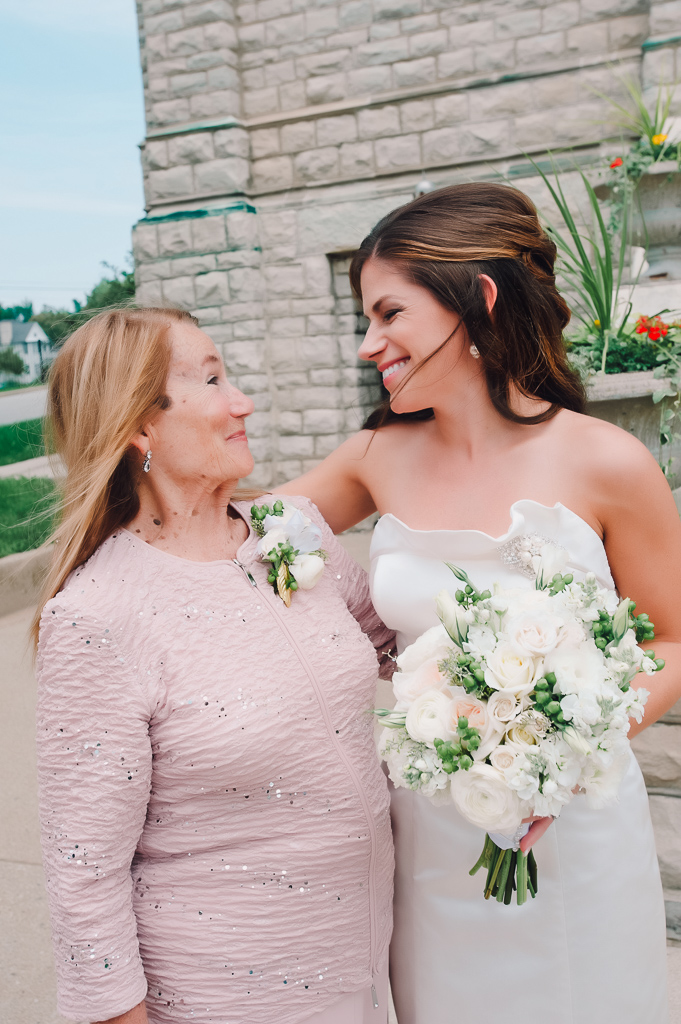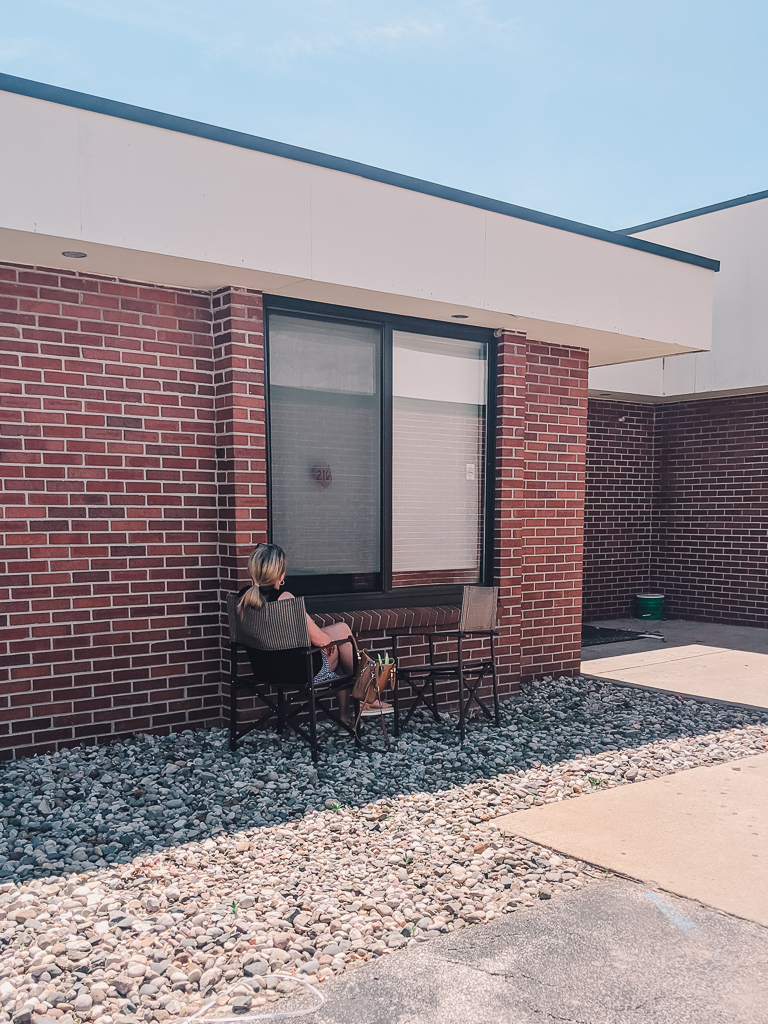Stolen Goodbyes: Families of the Dying Need Clarity, Consistency

Earlier this month, I said goodbye to my grandmother for the last time. It was not as I had intended—squeezing her hand and kissing her softly on the cheek as we always do—but from outside a window, my face pressed tight to its dirty screen. I couldn’t see much, but called out to her, desperately hoping she could hear my voice through a tiny 1.5” opening.
My grandmother was not a COVID patient…
Rather, she was in hospice care, which per Michigan Governor Gretchen Whitmer’s executive order 2020-36 (as well as clarifications late last month from the state’s Health and Human Services Director Robert Gordon) does allow visitation for end of life patients. Those visitors must be health screened, wear masks, and follow all proper prevention protocols.
Watching a loved one die is gut wrenching, watching them die without the ability to comfort them one last time—knowing they want and need that touch—is agonizing.
The pain deepens when you can’t wrap your head around the logic of those restrictions. I certainly understand that health care facilities must take precautions to stop the spread of coronavirus. I know the challenges they face trying to keep their employees and other patients safe. However, the current lack of clarity surrounding visitation rules, as well as the discrepancies between facilities, is serving up another pain point for families that are already facing so much uncertainty.

Why was I not allowed to see my grandmother?
Saginaw’s Avista Nursing & Rehab informed us that only direct relatives of an end of life patient (e.g. the patient’s spouse, siblings, children, or the spouses of their children were allowed to enter. Additionally, only one person could visit at a time. There is a fundamental problem with that.
Health facilities have no right to determine which relationships are of most value to someone who is dying.
Blood relatives are not always the connections that matter most. A friend might be closer than a sibling or child. There is no way a health facility could know who an end of life patient needs to see before they pass. According to the National Institute on Aging, comfort care is vital in these situations. It’s not just about pain management. It involves addressing physical, emotional and spiritual needs. Coronavirus hasn’t erased them. If a hospice facility must restrict visitors to a set number (be it 4, 6 or only 2) for the protection of its population that is understandable. However, the patient’s primary caregiver should decide who those people will be.

My grandmother and I have shared an intensely close bond for more than 30 years. As her dementia progressed, I remained one of the few people she always recognized. It was evident to her caregivers that my voice could resurrect something in her brain, bringing moments of real clarity and joy. When we would talk—reflecting on our happiest moments together—it was if her dementia disappeared.
She might not have been able to speak in her final hours, but the thought that I might be able to give her a sliver of cognition and calm before she passed had me wishing I could rip that window from the sill. I was desperate to hold her hand and whisper in her ear.

Imagine this…
Under Avista’s policy, the spouse of a newly married sibling or child, who might have known the patient for a single year, could visit. However, an adult grandchild who shares 36 years of precious memories is not? We also can’t ignore dying patients who don’t have living siblings or children. Surely, they have a friend who can offer that level of closeness and comfort.
We also need to talk about the one-person visitor limit. While a well intended safety measure, this policy can be profoundly damaging for family caregivers. When you are trying to support a dying family member, you too need support. I am not saying health care facilities should let everyone in the room during coronavirus. That is simply impossible right now. However, when the moment of death is near, facilities should compassionately allow two visitors in the room.

In the case of my family, this would allow both of my grandma’s sons to hold her hand as she passed. They would have had each other to lean on during that difficult moment.
No one should be forced to watch their mother die alone when a state-approved alternative exists.
Currently, health care visitation policies in Michigan are patchy and inconsistent. Each facility makes its own rules. For instance, Michigan Medicine is more liberal than Avisita. It allows up to 6 designated visitors to visit a patient at end of life (2 at a time). McLaren Health and Beaumont Health also allow 2 at a time. Ascension Michigan permits one.
The intent of this post is not to blame facilities or their staff. We are in unprecedented times and health care workers are exceptionally compassionate, empathetic individuals doing their best in a horrible situation. However, they are often hamstrung by policies that do not fit the fluidity and complexity of life (and death) during coronavirus.
Consequently, I implore health care facilities—Avista and others—to improve transparency when it comes to visitation restrictions.
- Post visitation restrictions that are clear and updated in your facilities and on your websites.
- Empower staff with that information, so they can explain current rules and the intent behind them if asked.
- If you limit a patient’s visitors to a set number, allow the patient’s primary caregiver to designate who those visitors will be.
- Finally, allow two visitors when death is near. That is a burden no one should have to shoulder alone.
Have you lost a loved one during the coronavirus outbreak and felt robbed of your goodbye?
Please share your story in the comments or reach out to me via Instagram or email ([email protected]). It is my hope that if enough of us share our #stolengoodbye stories, perhaps common sense visitation changes will come. If you feel comfortable please send a photo of your loved one and I will will post a tribute here and on Instagram stories. I am thinking of you and my heart aches for you.
Now, I want to share a peaceful moment… and the conclusion of my grandma’s story.

My heart was pretty heavy after my grandma passed. In fact, if I’m honest, I had a lot of anger to work though. I kept thinking what if she thought we abandoned her? What if she didn’t know I was right outside the window? I said some choice words, went for a long frustration-filled run, then said a quiet prayer in my car. We were in Montana at the time.
I asked my grandma if she could let me know she was okay, that she was happy. Could she send an unmistakable sign? Of course I never imagined anything would happen. Those kind of things just don’t happen to people like me. An hour later a storm rolled in. It lasted for about 20 minutes. As the skies cleared, I spotted this… the most vibrant double rainbow I’ve ever seen. This picture almost looks fake. The colors were just unreal!
That night, I called my mom to tell her what I saw. Through tears, she told me she saw one too, just the night before. She was sitting on my grandma’s porch in Michigan and there it was… a double rainbow. Two states, two rainbows? I think my grandma is at peace. She was always a rather flashy woman. She loved high heels, bold lipstick, big jewelry, and anything with sparkles. If she were to pick a sign, this was certainly her style!

Leave A Comment